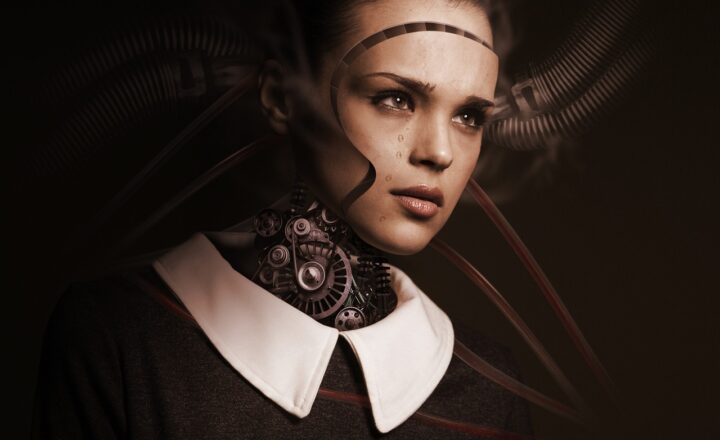From Chess to Creativity: The Incredible Achievements of AI in Unlikely Fields
November 18, 2024

Artificial Intelligence (AI) has revolutionized numerous industries, often in ways that might have seemed improbable just a few decades ago. While most people are familiar with AI’s impact on data analysis, automation, and even gaming, its achievements in more creative and abstract domains deserve special attention. In this article, we will explore the remarkable accomplishments of AI in fields such as art, literature, music, fashion, and even culinary arts, illustrating how technology can enhance human creativity and broaden the horizons of innovation.
1. The Beginnings: AI Gets a Checkmate
AI made headlines when IBM’s Deep Blue defeated world chess champion Garry Kasparov in 1997. This landmark victory marked a significant moment in the development of artificial intelligence, showcasing its potential to strategize and learn from vast amounts of data. However, chess was just the beginning. The algorithms developed for chess have since evolved, influencing various fields and inspiring more complex problem-solving applications.
But how did a game of chess lead to creativity?
2. AI in the Arts: Creating Beauty from Data
The art world has witnessed incredible innovations thanks to AI. Artists and technologists have collaborated to create breathtaking works of art generated by algorithms that analyze existing art styles. Neural networks, especially Generative Adversarial Networks (GANs), have facilitated this creative explosion.
Notable examples include:
- Refik Anadol: A media artist who creates mesmerizing installations using data and machine learning. His works transform data into visual art, allowing viewers to experience information in a new, evocative way.
- AI-generated paintings: Some algorithms can create original artwork by learning from renowned artists. One such AI, named AICAN, has produced works that have been featured in galleries and sold at auctions for impressive sums.
- Artistic collaboration: AI tools are assisting human artists rather than replacing them. Platforms like DeepArt allow users to apply the visual style of famous artworks to their own pictures, creating unique blended pieces.
AI doesn’t just mimic existing art; it opens new avenues for creative expression, pushing artists to explore the unknown.
3. Literature: The New Storytellers
AI’s influence extends into literature, where algorithms are not only analyzing texts but also writing them. Several projects have emerged showcasing AI’s ability to craft poems, short stories, and even novels.
- OpenAI’s GPT-3: This language model can generate human-like text, which has led to discussions about the potential of AI in creative writing. From smart assistants to novel writing, GPT-3’s capabilities extend beyond basic interactions.
- Poetry Generation: AI has been used to create poetry by analyzing linguistic patterns and structures found in human-written work. Programs like ‘Robot Writes a Poem’ have proven that machines can articulate emotions and thoughts creatively.
- Interactive storytelling: AI is also revolutionizing gaming and interactive narratives by crafting dynamic storylines that respond to player choices, creating unique narratives that engage users in unprecedented ways.
While traditionally viewed as a purely human endeavor, storytelling can now be explored through AI lenses, enriching the narrative landscape.
4. Harmonizing with Machines: AI and Music Composition
AI has entered the world of music, bringing forth unique compositions and collaborating with human artists. The marriage of technology and creativity is paving the way for new musical experiences.
- AIVA: An AI composer that creates music for film scores, video games, and commercials. AIVA learns from thousands of scores, producing original compositions that resonate with audiences.
- OpenAI’s MuseNet: Capable of creating songs in various genres and styles, MuseNet has even collaborated with famous artists, proving that AI can be a valuable partner in music creation.
- AI DJing: Intelligent music systems like Jukedeck and Amper Music enable users to generate background scores for videos and events by simply selecting parameters, making composition accessible to all.
The intersection of AI and music showcases new collaborative possibilities where machines help humans refine their creative visions.
5. Fashion: The Computational Runway
The fashion industry has embraced AI to inform design choices and improve the clothing manufacturing process. AI can predict fashion trends by analyzing vast datasets from social media, retail, and online behavior.
- Stitch Fix: This online personal styling service uses AI to curate clothing recommendations tailored to each customer’s preferences, combining machine learning with human insight.
- AI Fashion Shows: Some designers have even experimented with AI-generated fashion shows, where virtual models walk the runway wearing AI-created outfits, showcasing how advanced algorithms can influence contemporary fashion.
- Sustainable Fashion: AI is helping brands make more sustainable choices by optimizing material sourcing and production processes, reducing waste and environmentally harmful practices.
As fashion becomes more technology-driven, the collaboration between AI and designers is reshaping how we think about style and sustainability.
6. Culinary Arts: A Recipe for Innovation
In the culinary world, AI has made significant strides, from recipe creation to kitchen automation, enhancing the culinary arts’ creative aspect. AI-driven systems can analyze ingredients and cooking methods to create innovative recipes.
- IBM’s Chef Watson: A groundbreaking project that combines AI and culinary arts. Chef Watson can generate unique recipes by understanding flavor pairings and ingredient synergy, helping chefs think outside the box.
- Automated Cooking Systems: Smart kitchens equipped with AI can assist chefs in preparing meals with precision and efficiency, allowing for consistent quality and creativity in dishes.
- Culinary Data Analysis: AI can analyze dining trends and consumer preferences, providing insights into emerging flavors and dietary trends, allowing chefs to innovate accordingly.
The influence of AI in culinary arts demonstrates how data-driven creativity can yield delicious results while addressing modern dining preferences.
Conclusion: Embracing AI’s Creative Potential
The incredible achievements of AI in unlikely fields such as art, literature, music, fashion, and culinary arts reflect a broader trend: AI is not just a tool for automation and efficiency; it is a partner in innovation and creativity. As we progress through the 21st century, the collaboration between humans and machines promises to redefine creativity in ways we are just beginning to understand.
As AI continues to evolve, it will undoubtedly push the boundaries of what is considered possible in creative fields. By embracing these advancements, we not only expand our own creative horizons but also foster a new era of interdisciplinary collaboration that merges human intuition with machine precision.







